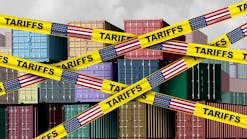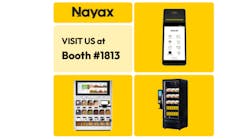Customer Experience or CX is a hot initiative at many companies and many more companies, from Fortune 500 to 5-10 person start-ups, are looking how to start and build their CX programs. Customer Experience takes passion, perseverance, and a belief to build a great series of experiences for the customer across all customer interaction points in an organization. A great product or service is the start point for great CX. You also need a great billing process, great digital tools, and reasonable pricing, and a great way to resolve and settle customer problems. Here are five easy to follow steps to have a great Customer Experience program.
Step #1 – Define What Customer Experience Is For The Entire Company. Traditionally, Companies create customers and compete on the need satisfaction ability of their products and services with their existing and desired (future) customer base. This is Marketing 101. Customer Experience seeks to understand and create great customer experiences along the totality of all interactions that a customer has with a company. Therefore, if I am purchasing a cup of coffee, as a customer I want more than just a great tasting cup of coffee. I want a pleasant in store experience, I want a clear menu, I want an easy to use mobile phone app, and I want an easy to use customer service platform if I have a problem that requires resolution. For Customer Experience to truly change and improve a company, the entire company has to be concerned with consistently creating excellence at every customer interaction that any customer has with any point of a company. Having everyone in a company understanding what Customer Experience truly represents is the first step to a great CX program.
Step #2 – Create an Initial Customer Journey Map, Even A Simple One Will Do. Once the company understands the importance of CX, then creating a broad visual representation of how the customer interacts with all facets of the company is the critical next steps. How to customers hear about your services? How do customers shop and purchase? How do customers make product returns? How do customers receive and pay their bills? How do customers resolve a product compliant? These are all critical steps in a Customer Journey Map that spells out the complete journey or interaction a typical customer has with all the points of interaction with a company. Customer Journey Maps are meant to be high level guides that can help a company understand, monitor, and improve the key steps of the customer’s total interactions.
Step #3 – Listen To Customer Comments, Not Scores, Along The Customer Journey. Traditionally, companies love numeric customer satisfaction and other survey scores. Numeric scores are easy to report, easy to track, and easy to analyze with adjacent time period changes. However, numeric scores are almost completely useless for determining how to understand and improve a customer journey assessment. Instead of numeric, companies need to have great text analytics and customer sentiment analysis to tell them what is working, what is not working, and the customers overall sentiment toward that section of the company under evaluation. Text, not numeric, is the key to understand, directly from the mouth of the customer, what is working and what must be fixed.
Step #4 – Find Way to Improve Customer Loyalty along Every Part of the Customer Journey. Companies are laser focused on growth, cost reduction initiatives, and competitor price actions. These focuses are traditional, but they are not the elements that will create and measure great Customer Experience. The best measure for great Customer Experience is Loyalty. Loyalty is the one true measure of great Customer Experience because if a customer continues to return, then those customers contribute to all the financial results of a firm. When customers defect, become sporadic, or simply fall away, then that is the true bottom line assessment of how well your company's Customer Experience program is working. Great Customer Experience focuses on a great core product and service, but also on great experiences throughout the totality of all customer interactions. Great experiences throughout the company at all levels build satisfaction and loyalty with the entire company and not only the company’s products and services. This customer loyalty is what drives overall financial results and revenue growth.
Step #5 – Track & Advertise Your Improvements to the Customer Journey to Your Customers. Another critical step in company Customer Experience initiatives are to advertise ongoing and completed improvements to the Customer Journey. Customers want companies to act on their survey feedback, but customers need to know that companies are listening, hearing, and acting on their feedback. Customer Experience programs need dedicated, no nonsense, and clear customer communication programs that directly target customers along each step of the Customer Journey how companies are acting to improve interactions for the customer.
Customer Experience programs must be more than words and tokens to improve the current Customer Journey. Truly great Customer Experience programs must be structured, disciplined, independent employ highly analytical frameworks that capture the current state, initiatives, and improvements along the totality of the Customer Journey. Customer Experience is within the reach of any company in any industry and in any stage of its existence. Great Customer Experience drives extreme customer loyalty and with it great financial results and long term customer advocacy.
Chad Storlie is an Adjunct Professor of Marketing at Creighton University. Chad is a widely published author on business, leadership, military, and higher education topics. Follow Chad Storlie on Twitter @CombatToCorp and Connect on LinkedIn. [email protected].

Chad Storlie
Chad Storlie is the author of two books: (1) Combat Leader to Corporate Leader and (2) Battlefield to Business Success. Chad’s brand message is that organizations & individuals need to translate and apply military skills to business because they immediately produce results and are cost effective. Chad is a retired US Army Special Forces officer with 20+ years of Active and Reserve service in infantry, Special Forces, and joint headquarters units. He served in Iraq, Bosnia, Korea, and throughout the United States. He was awarded the Bronze Star, the Combat Infantryman’s Badge, the Meritorious Service Medal, the Special Forces Tab, and the Ranger Tab. Chad is also an adjunct Lecturer of Marketing at Creighton University and Bellevue University in Omaha, NE. In addition to teaching, he is a mid-level marketing executive and has worked in marketing and sales roles for various companies, including General Electric, Comcast, and Manugistics. He has been published in over 70 publications including The Harvard Business Review blog, Business Week Online, Forbes, Christian Science Monitor, and USA Today. He has a BA from Northwestern University and an MBA from Georgetown University.





